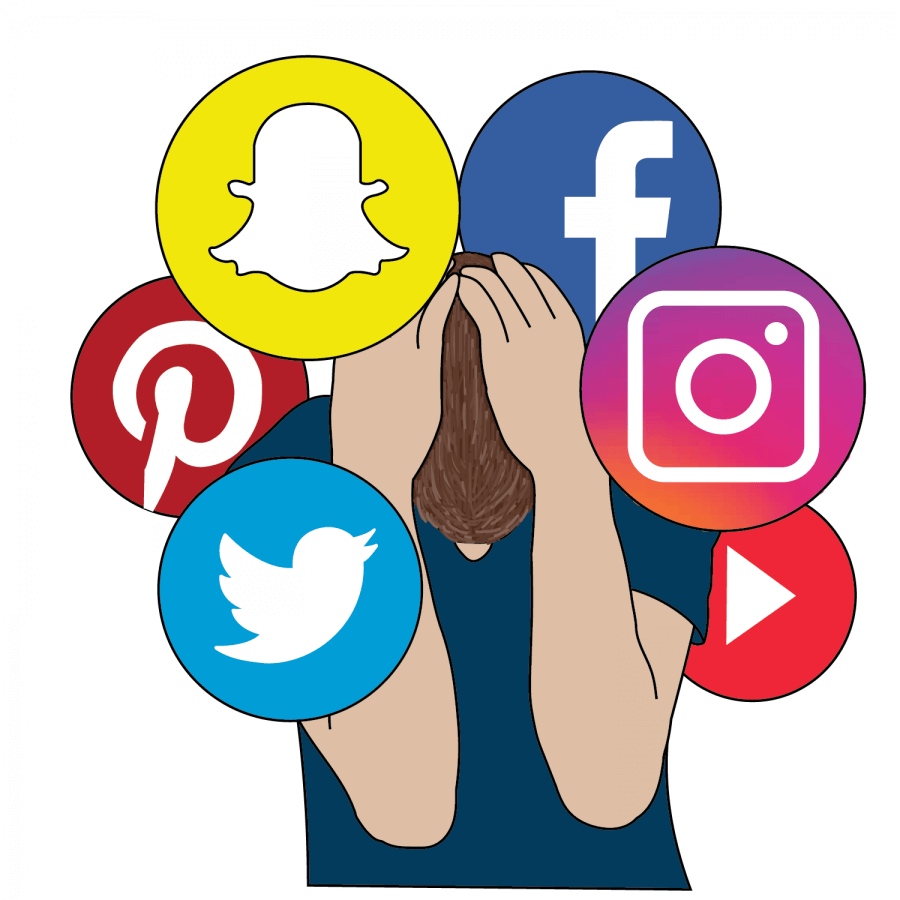written by Meghan Pacana

It’s no secret that social media has a choke hold on our lives nowadays. Not only do we use it as a way to contact friends and family, but since the COVID-19 pandemic, online conferencing has become quite popular in both academic, social, and workplace settings.
By just the click of a button, you are able to get in touch with a person across the world, access events, and even submit assignments. The internet has drastically changed the way our society functions on a day-to-day basis, but is it for the better?
Social Media Usage
In 1997, the first social media platform was born. SixDegrees was a social forum where users could create a profile, interact with other users, and post updates on their board. By 2005, social media was still practically unheard of on the internet. Only 5 percent of the internet users even used social media platforms such as Friendster, LinkedIn and MySpace.
A recent study done in 2019 by an American based research center revealed that 97 percent of teens aged 13-17 use at least one social media platform and spend an average of nine hours a day on their smartphones.
The Good, The Bad, and The Ugly
Social media platforms can be an amazing source for connectivity and convenience. You can set reminders to pay a bill, FaceTime a friend, type a homework question into Google, and use it for community engagement.
The internet is an amazing place, but due to the vast amount of information, it can present a range of issues and uncertainties, especially among young adults and teens. With the average hours of nine hours a day for a teen, this leads to more exposed time to cyberbullying, social anxiety, depression, and leaves young adults vulnerable to non-age appropriate content.
Online vs. Reality
Before going into the downfall, we should address what the exact term of social media is. Social media is most widely defined and recognized as a form of online communication used by people in order to create communication, communities, networks, to share and collect information and post content. Social media itself is not the problem, it’s the way it is used and how easily information can be corrupted.
Every single social media has tools that can be used to alter images and appearances. Not only does this lead to a false sense of reality, but it leads to serious self-image issues. A recent study shows that two in five college females associate their self-worth to how they look.
With a drastic increase in screen time with social media usage, bullying statistics have skyrocketed. Unfortuantely, due to cyberbullying it has resulted in suicide statistics growing fifty percent in just three decades. This has made suicide one of the leading causes of death for children under fourteen years old.
What Can Be Done?
For young children especially, their minds are not fully developed which makes them more susceptible to harmful behavior on the internet. Even when you’re older, social platforms still have a downfall. What can be done? Well, start distancing yourself from your phone.
New technological upgrades have been made on your cellular devices that count how many hours a day you spend on your phone, it even comes up with “limits” to try to assist with screen time. Not only will limiting screen time be beneficial for your mental and emotional health, but physical too. You may notice you have more focus, time, and energy throughout the day.